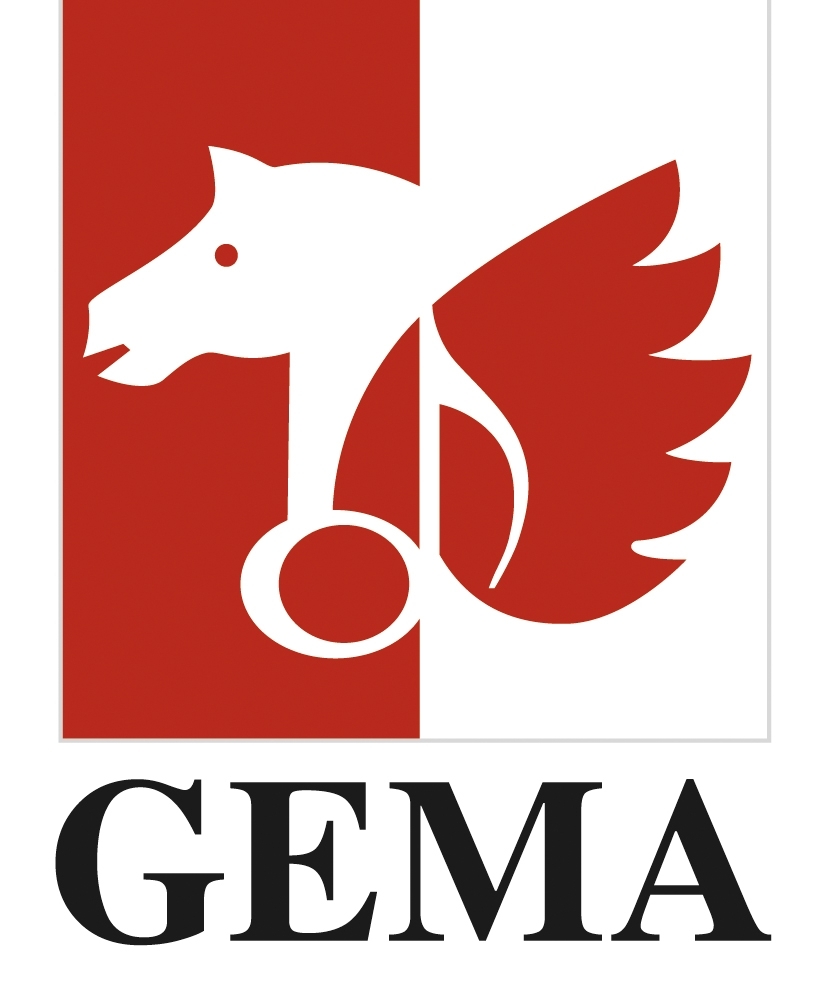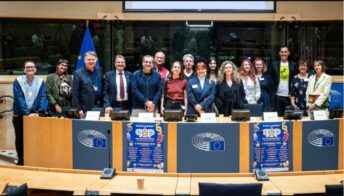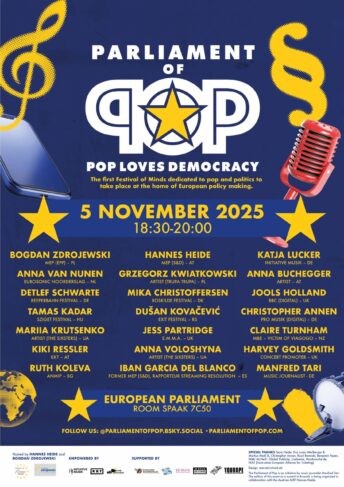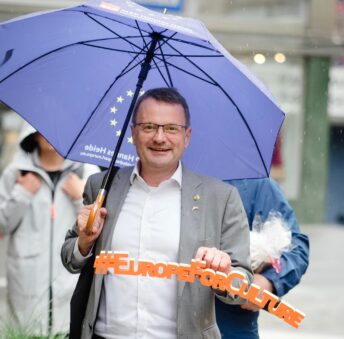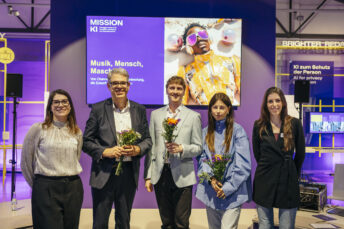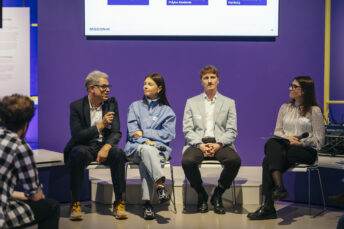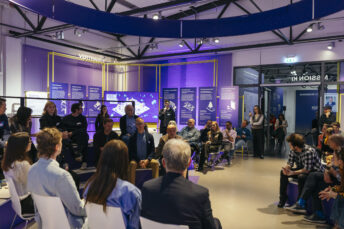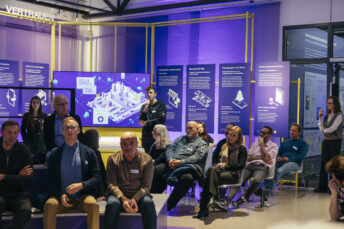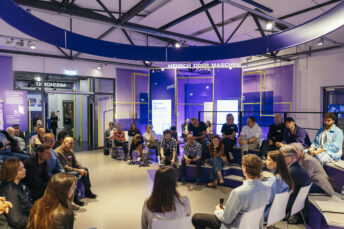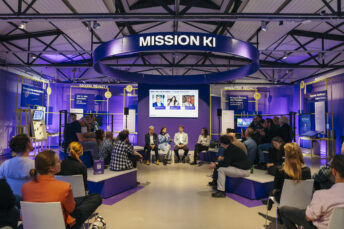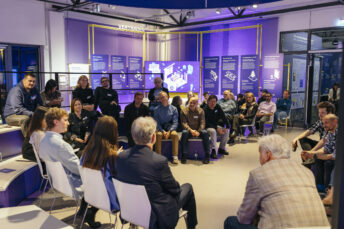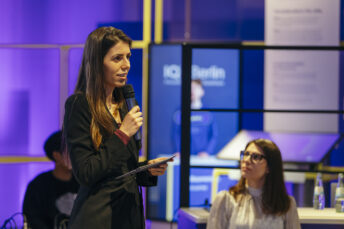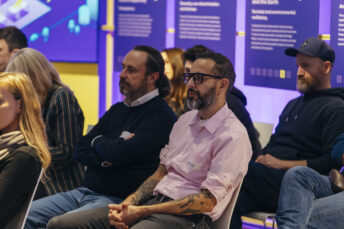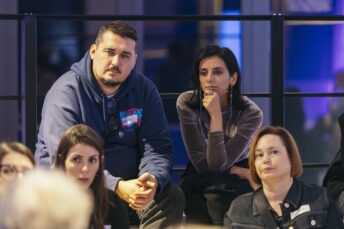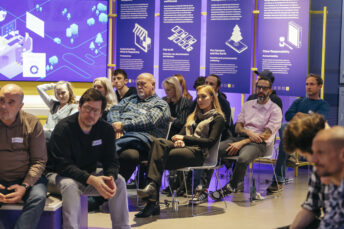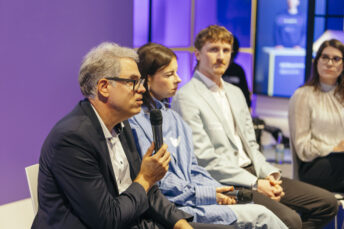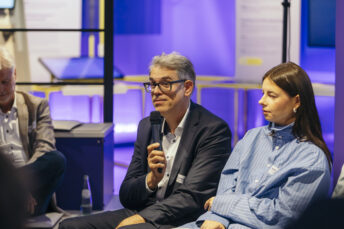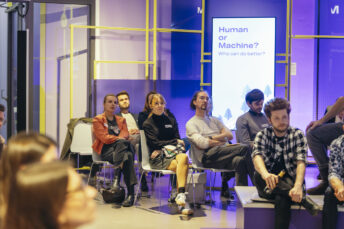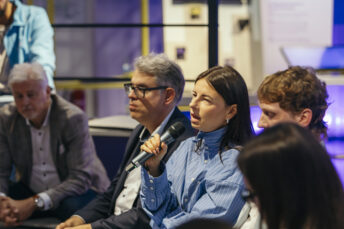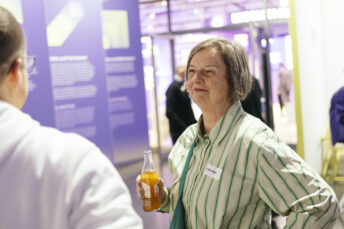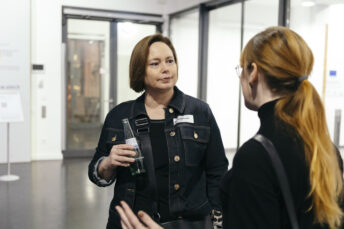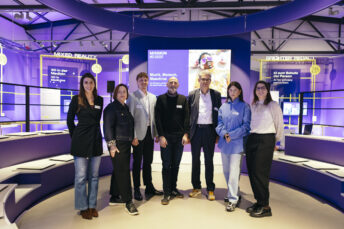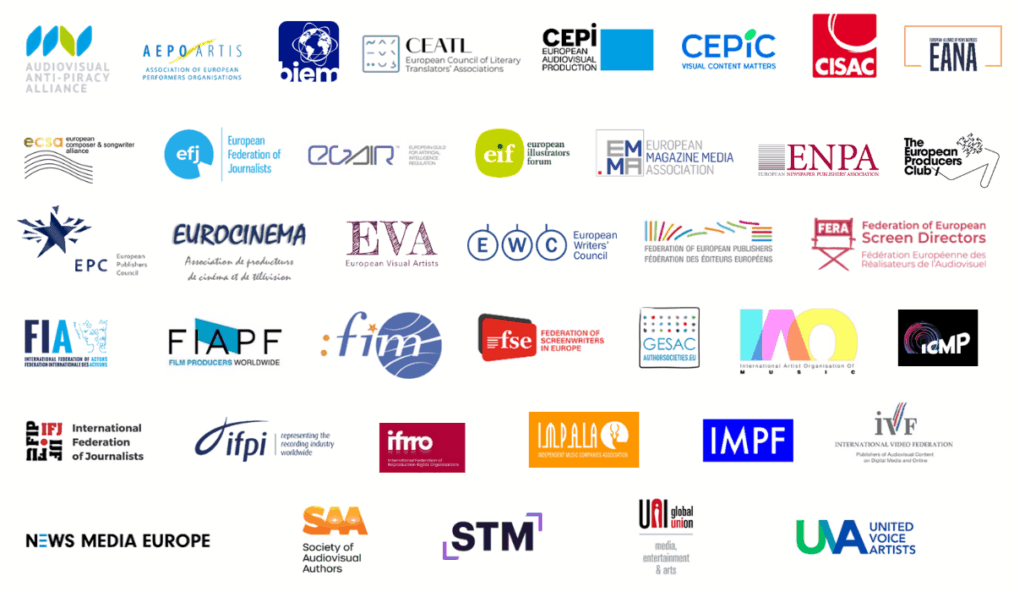
Joint statement by a broad coalition of rightsholders active across the EU’s cultural and creative sectors regarding the AI Act implementation measures adopted by the European Commission
Representing a broad coalition of European and global authors, performers, publishers, producers and other rightsholder organisations, we wish to formally express our dissatisfaction with the published GPAI Code of Practice, the GPAI Guidelines, and the Template for disclosure of a sufficiently detailed summary of training data under Article 53 of the EU AI Act.
Despite the extensive, highly detailed and good-faith engagements by rightsholder communities throughout this process, the final outcomes fail to address the core concerns which our sectors – and the millions of creators and companies active in Europe which we represent – have consistently raised.
The result is not a balanced compromise; it is a missed opportunity to provide meaningful protection of intellectual property rights in the context of GenAI and does not deliver on the promise of the EU AI Act itself.
We remind the European Commission that Article 53(1)(c) and (d) of the EU AI Act and related provisions were specifically designed to “facilitate holders of copyright and related rights to exercise and enforce their rights under (European) Union law” in response to ongoing, wholesale unlicensed use of their works and other protected content by GenAI model providers in disregard of EU rules. However, the feedback of the primary beneficiaries these provisions were meant to protect has been largely ignored in contravention of the objectives of the EU AI Act as determined by the co-legislators and to the sole benefit of the GenAI model providers that continuously infringe copyright and related rights to build their models.
In 2024, the cultural and creative sectors across Europe welcomed the principles of responsible and trustworthy AI enshrined in the EU AI Act, intended to ensure mutually beneficial growth of innovation and creativity in Europe. Today, with the EU AI Act implementing package as it stands, thriving cultural and creative sectors and copyright intensive industries in Europe which contribute nearly 7% of EU GDP, provide employment for nearly 17 million professionals and have an economic contribution larger than European pharmaceutical, automobile or high-tech industries, are being sold out in favour of those GenAI model providers.
The deployment of GenAI models and content production systems which also make extensive use of scraping is already underway. The damage to and unfair competition with the cultural and creative sectors can be seen each day. The cultural and creative sectors must be safeguarded, as they are the foundations of our cultures and the Single Market.
We wish to make it clear that the outcome of these processes does not provide a meaningful implementation of the GPAI obligations under the AI Act. We strongly reject any claim that the Code of Practice strikes a fair and workable balance or that the Template will deliver “sufficient” transparency about the majority of copyright works or other subject matter used to train GenAI models. This is simply untrue and is a betrayal of the EU AI Act’s objectives.
We call on the European Commission to revisit the implementation package and enforce Article 53 in a meaningful way, ensuring that the EU AI Act lives up to its promise to safeguard European intellectual property rights in the age of generative AI.
We also call on the European Parliament and Member States, as co-legislators, to challenge the unsatisfactory process of this exercise, which will further weaken the situation of the creative and cultural sectors across Europe and do nothing to tackle ongoing violations of EU laws.
—
List of signatories
AAPA (Audiovisual Anti-Piracy Alliance) represents companies involved in the provision of protected audiovisual services, including rights owners and broadcasters, security technology for such services, and the manufacturing of products which facilitate the delivery of such services. AAPA’s mission is to lead the fight against audiovisual piracy across Europe, and beyond through effective advocacy, supporting law enforcement and building partnerships to better tackle piracy.
AEPO-ARTIS is a non-profit making organisation that represents 40 European performers’ collective management organisations from 30 different countries. The number of performers (musicians, actors and dancers), from the audio and audiovisual sector, represented by AEPO-ARTIS member organisations is estimated at more than 650,000.
BIEM is the international organisation representing mechanical rights societies. Mechanical rights societies exist in most countries. They license the reproduction of songs (including musical, literary and dramatic works). As of today, BIEM represents 60 societies from 56 countries. www.biem.org.
CEATL (European Council of Literary Translators’ Associations) is an international non-profit organisation created in 1993 as a platform where literary translators’ associations from different European countries could exchange views and information and join forces to improve status and working conditions of translators. Today it is the largest organisation of literary translators in Europe with 38 member associations from 30 countries, representing some 10,000 individual literary translators.
CEPI (the European Audiovisual Production Association) represents over 2,600 independent film and TV producers across Europe through 19 national associations across 17 European countries.
CEPIC represents hundreds of Picture Libraries and Agencies, who themselves represent hundreds of thousands of photographers whose core business is the direct licensing of visual content offline and online. Acting as rightsholders, Picture Libraries and Agencies license digital assets for all kinds of commercial uses, to newspapers, magazines, advertising, broadcasters, etc. CEPIC members are continuously adapting to innovative technology and have developed sophisticated digital platforms to both market digital content online and provide digital access to images. CEPIC’s purpose is to act as a united voice for the visual media industry in Europe and beyond.
CISAC (International Confederation of Societies of Authors and Composers) is the world’s leading network of authors’ societies. With 228 member societies in 111 countries, CISAC represents more than 5 million creators from all geographic areas and all artistic repertoires: music, audiovisual, drama, literature and visual arts.
EANA (European Alliance of News Agencies, founded in 1956) is a non-profit membership association representing 32 leading news agencies across Europe. EANA serves as a platform for cooperation, knowledge exchange, and advocacy, with a focus on securing a fair and safe environment for the development of news agencies in particular and of the entire news media as a whole. With a collective direct and indirect global reach of their newswires of over 750 million people, EANA members share the common goal of delivering unbiased, high-quality news and supporting a healthy media environment throughout Europe.
ECSA (European Composer and Songwriter Alliance) represents over 30,000 professional composers and songwriters in 28 European countries. With 59 member organisations across Europe, the Alliance speaks for the interests of music creators of art & classical music (contemporary), film & audiovisual music, as well as popular music.
EFJ (The European Federation of Journalists) is the largest organisation of journalists in Europe, representing over 296,000 journalists in 74 journalists’ organisations across 44 countries. The EFJ fights for social and professional rights of journalists working in all sectors of the media across Europe through strong trade unions and associations.Member of the European Trade Union Confederation (ETUC), the EFJ is recognised by the European Union and the Council of Europe as the representative voice of journalists in Europe.
EGAIR (European Guild for Artificial Intelligence Regulation) is a network of creatives and associations from all over Europe, lobbying for the protection of artists’ works and data from AI companies. Originally founded by MeFu, the Italian association of comic book creators, EGAIR now represents over 20.000 creatives, artists and associations.
EIF (European Illustrators Forum) is a network of 23 national Associations of illustrators based in 14 European countries. EIF represents over 12,000 illustrators based in Europe. The EIF defends the rights of illustrators and promotes illustration within Europe and around the world. It represents its members’ common interests by liaising with other networks and authorities of the European Union. The EIF furthers exchange of knowledge and critical debate between professional illustrators and their clients through conferences, exhibitions, research and education.
EMMA (European Music Managers Alliance) brings together organisations across Europe to support the development, professionalisation and representation of managers and their artists.
EMMA (European Magazine Media Association) is the unique and complete representation of Europe’s magazine media, enjoyed by millions of consumers on both paper and digital formats, covering automotive, business, financial, news, children, comics, teenage, general interest, home, men’s and women’s titles, TV guides, B2B and scientific journals.
ENPA (European Newspaper Publishers’ Association) is the largest representative body of newspaper publishers across Europe, promoting press freedom and authoritative news content on print and digital formats. ENPA advocates for 14 national associations across 14 European countries and is a principal interlocutor to the EU institutions and a key driver of media policy debates.
EPC (The European Producers Club) is an association representing nearly 200 independent European producers from 35 countries, highly specialized in international co-productions.
EPC (European Publishers Council ) is a high-level group of 27 Chairmen and CEOs of Europe’s leading media groups representing companies which are active in news media, television, radio, digital market places, journals, eLearning, databases and books. We have been communicating with Europe’s legislators since 1991 on issues that affect the health and viability of journalistically-driven media and publishing companies in the European Union, which uphold the freedom of expression, media diversity, and democratic debate.
EUROCINEMA (Association of Film and Audiovisual Producers) aims to defend and promote the fundamental role of the audiovisual industry and film-makers in a politically and economically integrated Europe.
EVA (European Visual Artists) represents the interests of authors’ collective management organisations for visual arts. 31 societies are gathered under this roof as members or observers. They manage collectively authors’ rights of close to 170 000 creators of works of fine art, illustration, photography, design, architecture and other visual works.
EWC (European Writers’ Council) is the world’s largest federation representing solely authors from the book sector and constituted by 50 national professional writers’ and literary translators’ associations from 32 countries. EWC members comprise over 220.000 professional authors, writing and publishing in 35 languages.
FEP (Federation of European Publishers) represents 31 national associations of publishers of books, learned journals and educational materials, in all formats, in Europe. FEP is the voice of the great majority of publishers in Europe.
FERA (Federation of European Screen Directors) serves as the independent voice of European screen directors in Brussels. Bringing together 46 member organisations from 31 countries, it represents over 20,000 active directors across film, television, and streaming – recognised as primary audiovisual authors. FERA advocates for their cultural, creative, and economic interests at both national and EU levels.
FIA (International Federation of Actors) represents more than 85 performers’ trade unions, guilds and professional associations in 61 countries. In a connected world of content and entertainment, it stands for fair social, economic and moral rights for audiovisual performers working in all recorded media and live theatre.
FIAPF (International Federation of Film Producers’ Associations) comprises 37 national associations representing producers of films and audiovisual programmes, including 16 national associations from the EU/EEA. Members’ constituencies are involved in the development, production, marketing and in some cases distribution, of all types of films and/or other types of audiovisual productions, ranging from feature-length films, short film, documentaries, television drama and other audiovisual content, across the European Union across all distribution channels.
FIM (International Federation of Musicians) is the only body representing professional musicians and their trade unions globally, with members in about 65 countries covering all regions of the world. Founded in 1948, FIM is recognised as an NGO by diverse international authorities such as the ILO, WIPO, UNESCO, the European Commission, the European Parliament or the Council of Europe.
FSE (Federation of Screenwriters in Europe) is a network of national and regional associations, guilds and unions of writers for the screen in Europe, created in June 2001. It comprises 29 organisations from 26 countries, representing more than 10,000 screenwriters in Europe.
GESAC (European Grouping of Societies of Authors and Composers, founded in 1990) represents 32 of the main copyright management societies (authors ‘societies) in the European Union, Iceland, Norway and Switzerland, administering the rights and remuneration of more than 1.2 million authors, composers and writers in a variety of sectors (music, audiovisual, literary and visual and graphic arts) and music publishers.
IAO (International Artist Organisation) is the umbrella association for national organisations advocating for the rights and interests of the Featured Artists in the music industry. Our main interests are transparency, the protection of intellectual property rights and a fair reflection of the value an artist’s work generates.
ICMP is the global trade body for the music publishing industry; representing 77 national associations across 6 continents, indies, majors and The International Production Music Group – cumulatively representing approximately 90% of the world’s commercially released music.
IFJ (International Federation of Journalists), the world’s largest organisation of journalists, represents 600,000 media professionals from 187 trade unions and associations in more than 148 countries. Established in 1926, the IFJ is the organisation that speaks for journalists within the United Nations system and within the international trade union movement.
IFPI (International Federation of the Phonographic Industry) is the voice of the recording industry worldwide. IFPI and its National Group network represents the interests of some 8,000 members across the globe.
IFRRO (International Federation of Reproduction Rights Organisations), is an international, independent, not-for-profit organisation representing collective management organisations for text and image materials (known as Reproduction Rights Organisations, or RROs), authors’ and publishers’ associations in the field of text and image-based works. RROs administer reproduction and other relevant rights, including certain digital rights, on behalf of both publishers and authors, including visual artists. With over 160 members across nearly 90 countries, IFRRO plays a key role in the global copyright ecosystem.
IMPALA is the European association of independent music companies, representing over 6,000 music SMEs. Its mission is to grow the independent music sector sustainably, return more value to artists, promote diversity and entrepreneurship, improve political access, inspire change and increase access to finance.
IMPF is the global trade and advocacy body for independent music publishers. IMPF helps to stimulate a more favourable business environment in different territories and jurisdictions for artistic, cultural, and commercial diversity for its music publisher members and the songwriters and composers they represent.
IVF – The members of the International Video Federation are associations representing businesses active in all segments of the film and audiovisual sector in Europe. The IVF’s membership is thus involved across development, production, marketing, and distribution of all types of films and audiovisual works, ranging from feature-length films, short films, documentaries, television drama and other audiovisual content, as well as the publication of such content on digital media (DVD, Blu-ray, etc.) and through all online channels ranging from transactional (TVOD/EST), subscription (SVOD) and advertisement-based (AVOD and FAST) distribution models.
News Media Europe is the voice of the progressive news media industry in Europe, representing over 2,700 news brands in print, online, radio and TV, through national associations from sixteen countries. Together, we defend key principles which are vital to us: protecting the freedom of the press, championing the digital future of our industry, and ensuring that the value of content is properly protected.
SAA (Society of Audiovisual Authors) is the umbrella association of European collective management organisations representing audiovisual authors. Its 33 members in 25 countries manage rights for over 174,000 film, television and multimedia European screenwriters and directors. The SAA supports audiovisual authors and promotes cultural diversity through policies that enable the dissemination of audiovisual authors’ works to audiences. CMOs’ role is to provide easy, legal access to these works and ensure authors are fairly paid to encourage further creativity for the benefit of society.
STM is the leading global trade association for academic and professional publishers. Our mission is to advance trusted research for the benefit of society. The membership is composed of over 140 organisations who are based globally and include academic and professional publishers, learned societies, university presses, start-ups and established players; STM members collectively publish over 70% of all journal articles.
UNI MEI (UNI – Media, Entertainment and Arts) unites over 140 unions and guilds to raise standards and enforce rights for more than 500.000 creatives, technicians and auxiliary workers. Together, our members work for a fair, inclusive, equal, and sustainable global entertainment industry and a just transformation.
UVA (United Voice Artists) is a global coalition of voice acting guilds, associations, and unions that have united to pursue their shared goals of protecting and preserving the act of creating, in particular, through the human voice. This collaborative effort brings together prominent associations and unions from the European Union, including France, Spain, Italy, Germany, Austria, Belgium, and Poland, as well as organizations in Switzerland, Turkey, the United States of America, Brazil, Africa, Australia and in South America.
